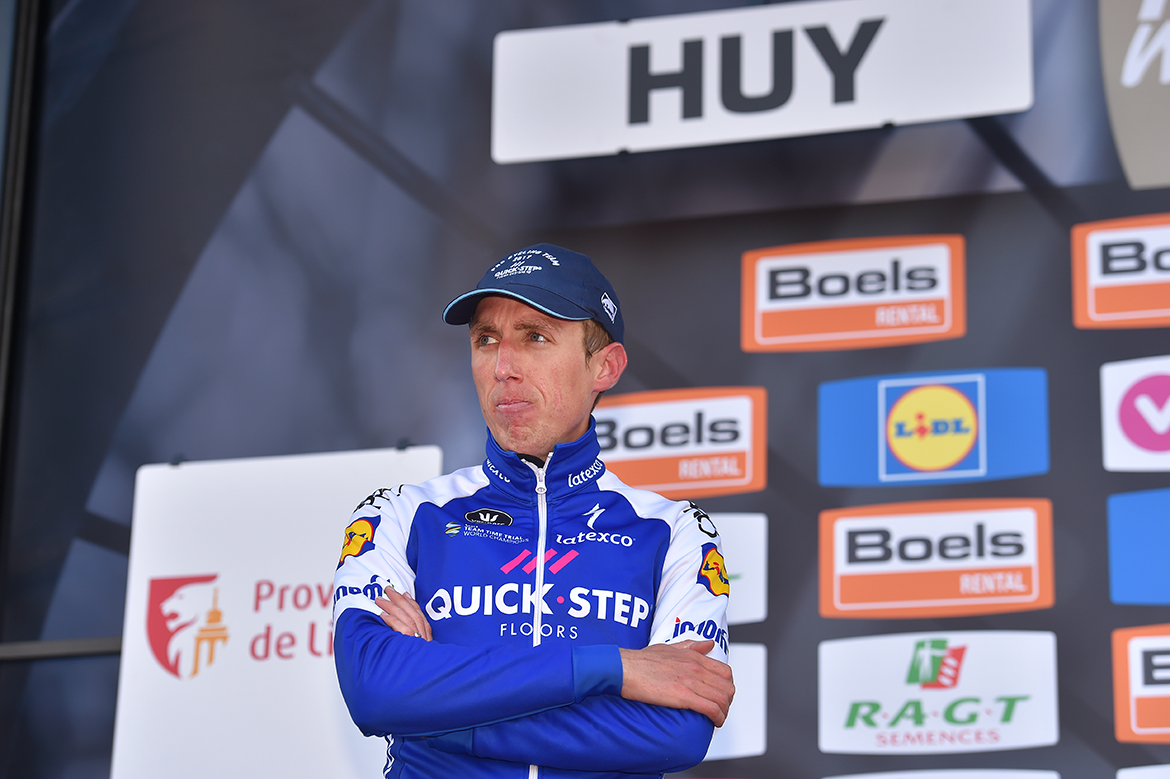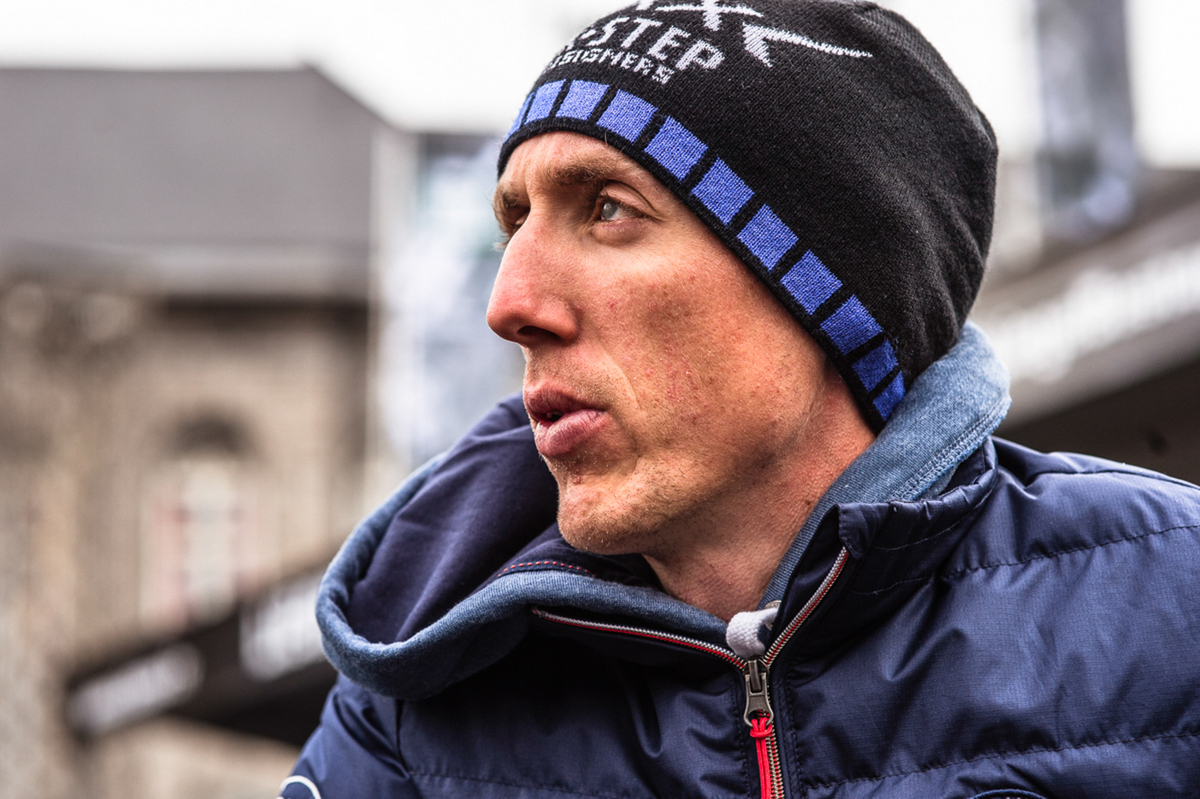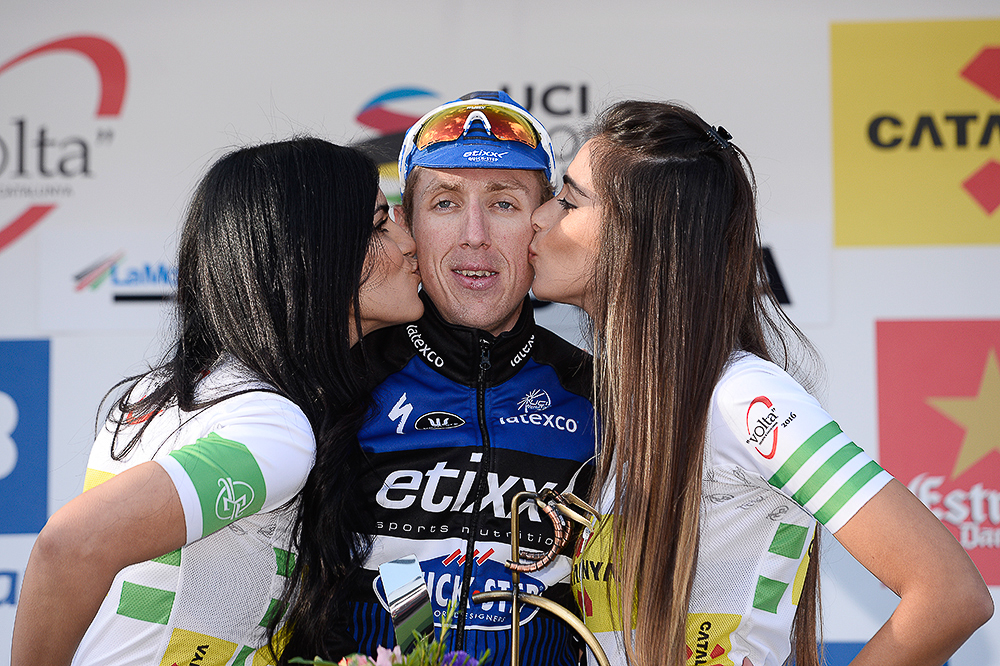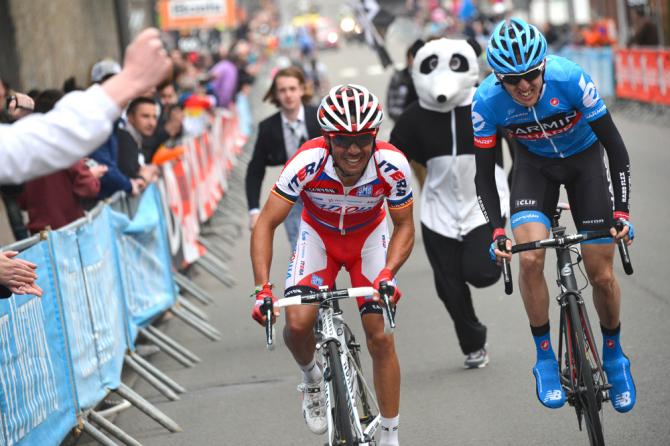10th time lucky? Dan Martin on his roller coaster quest for a second Liege-Bastogne-Liege
Irishman hoping to continue Quick-Step's run of podiums




Sunday will be the 10th time that Dan Martin (Quick-Step Floors) has taken part in Liège-Bastogne-Liège, a race in which he has had luck, success, and disaster in equal parts over the years. Not to mention his well-known encounter with the surreal side of life that seems to flourish so naturally in Belgium - the time when he soared to victory in Liège in 2013 while being pursued by somebody dressed up as a giant panda.
That was followed 12 months later by a crash on the final corner, just as he was sprinting to what could have been – although we'll never know – a second victory in as many years. 2015 saw him hit by crashes in both Flèche and Liège, abandoning both, and in 2016, after a very promising third place in Flèche, the freezing weather and snow in Liège severely hampered his chances and he finished 46th.
"I've had some very bad luck in Liège, but when I do a good ride in Flèche, normally I'm on track for a good ride in Liège as well," Martin told a small group of reporters before the weekend. Earlier in the week he finished an encouraging second on the Mur de Huy behind the unstoppable Alejandro Valverde. "Last year the weather didn't suit me, it was not a normal Liège, but in 2012, say, I was sixth in Flèche and then went on to get fifth in Liège."
"Liège is a race where a lot can go wrong, because it's a very long race, and that's partly why I love these races so much. It's six and a half hours of concentration where every little bit of everything you do, counts."
If Flèche remains very much defined by its final climb, then the other Ardennes hills in Liège-Bastogne-Liège are nearly always changing – apart from the last segment from the Cote de la Redoute. This year sees the introduction of three new ascents, the hardest is the Cote de la Ferme Libert, which replaces the Wanne-Stockeu-Haut Levee trilogy that traditionally acted as a curtain raiser for the race. On top of that, the Cote de la Rue Naniot, which split the last ascent in Ans in two, has been removed.
"For me personally, I don't think it changes the race much, but I think for the race as a whole it will alter things. Because people are scared of those changes, they think 'this happened on the Cote de Wanne, so you've got to be in the front on the Cote de Wanne' or 'this happened on the Stockeu…' It's almost like a script."
"With changes, it makes people a bit more nervous, maybe waste a bit more energy. But definitely the new roads are a lot narrower, even if the climbs are shorter than the Haut Levee, and the third one, the Libert, is really hard."
Get The Leadout Newsletter
The latest race content, interviews, features, reviews and expert buying guides, direct to your inbox!
"Then the bit after the Libert [km 180] and before we get to the next climb [the Rosier, km 198], that's now a much harder part of the course. That won't be decisive, but teams will lose numbers and that, then, has a knock-on effect in the end of the race."
Martin is pleased, though, with the absence of the Rue Naniot, arguing that it made for too cautious a race. "That said, last year was a very different Liège, not a normal one at all. It wasn't really a race, last year, it was more an endurance test. Everybody was just trying to get to the finish as fast as possible."
"It would have been interesting to see how Naniot changed the tactics this year, if they'd kept it in, but I think it would have negated things on Saint Nicolas especially, because it was a really hard little climb."
"Overall, though, I think it's a good route, and I just hope the weather is better than last year" - which, for now, seems likely.
Tactically, Martin feels Liège is a more complex affair than Flèche, "so teams will bring a lot stronger core group of riders, because you need riders to be present in the breaks, so you're not on the defensive. But that's where experience comes in, it's about knowing the race and staying calm - that's crucial in Liège, not panicking."
Nor, he believes, is it any good remembering how he might have won in 2014 had he not crashed. "Shit happens," he says bluntly. "You can't say what would have happened, but win or lose I try to forget quickly, that's the only way to be successful. Because if you think too much about what you've won or lost, it's finished, you need to move on."
"It wasn't like I made a mistake, there was oil on the road, I couldn't do anything different, so... we'll see when we get to that corner."
Liege-Bastogne-Liege or Il Lombardia?
He grins when asked whether he values his Lombardia Monument win, or his win in Liège-Bastogne-Liège the most. "That's a nasty question, I've got an Italian press officer," he says with a smile at Quick-Step Floors media manager Alessandro Tegner, sitting opposite. "They're very different races, but I can't choose between them, I love them both so much."
"Liège is special because it's roughly the same course, Lombardia gets changed around so much each year it's barely recognisable from one year to the next. I think that does take away a little bit of the shine from the race, for sure. But it'd be hard to choose between them."
"Anyway, these [the Ardennes Classics] are races I fell in love with even before I started cycling, watching on TV when I was a kid. From my neo-pro year onwards I've made sure I've done every year since then. So this will be my tenth Ardennes week."
The absence of Julian Alaphilippe and Philippe Gilbert changes things considerably, he recognises, and not for the better for Quick-Step Floors. "With them here, three of the strongest guys, it wouldn't be one-on-one, we'd be attacking." He also singles out Gilbert's huge knowledge of the Ardennes - "in Amstel, I learned so much from him just by following him" - as another benefit.
"It's unfortunate, but you can't change it. We've got an incredibly strong group of guys, though, and I'm fortunate to have their support going into the race. You need to be tactical, aware of opportunities, because I don't think any team is strong enough to sit on the front for 260 kilometres and control the race."
"So you have to be strong enough to follow groups, be ready to play defensive and offensive positions."
Come what may on Sunday, Quick-Step Floors have had an exceptionally strong Classics campaign. "It's almost like a competition," he says, "and even from Brabantse Pijl onwards, we've had second-first-second in the Ardennes Classics. One more to go and I almost feel a little bit of pressure, because we've been podium-ing on every Classic so far and to lose that record on the last one might be unfortunate."
"But there's no real pressure, there's never any real pressure. I remember that in the team meeting last year for the Ardennes where the message was basically 'guys, go and race your bikes because we know if you do your best and enjoy the race, you'll get a result.' And if I'm better than the other guys" he concludes "then I'll win."
Alasdair Fotheringham has been reporting on cycling since 1991. He has covered every Tour de France since 1992 bar one, as well as numerous other bike races of all shapes and sizes, ranging from the Olympic Games in 2008 to the now sadly defunct Subida a Urkiola hill climb in Spain. As well as working for Cyclingnews, he has also written for The Independent, The Guardian, ProCycling, The Express and Reuters.
